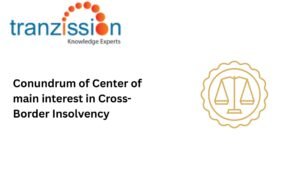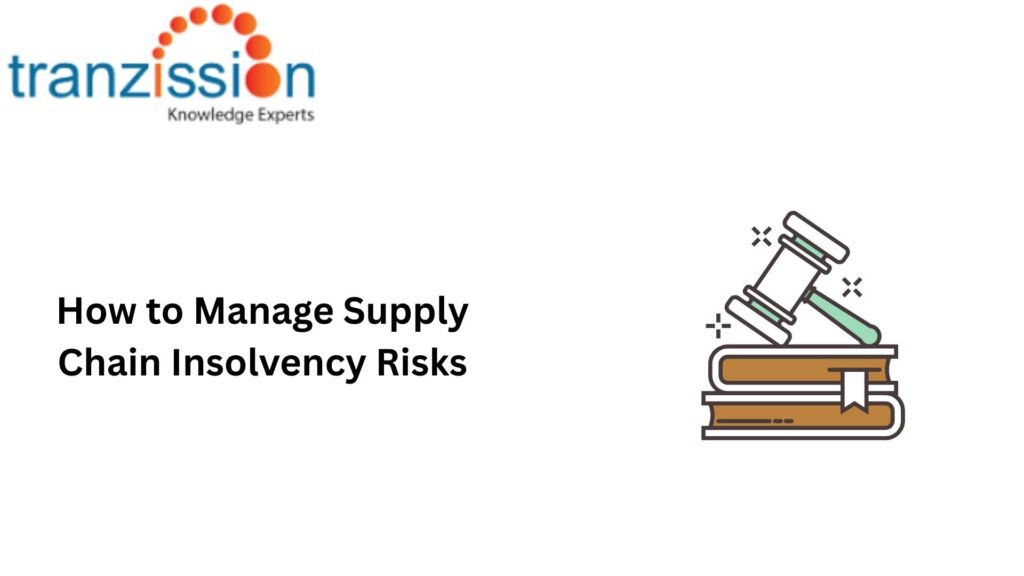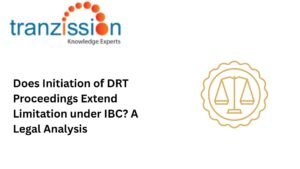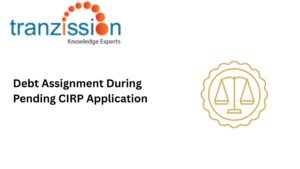
How to Manage Supply Chain Insolvency Risks

Table of Contents
Supply Chain Insolvency Risks refers to the probability that a supplier or customer within the chain will be unable to meet their financial obligations, potentially leading to a disruption or failure of the entire supply chain. This risk can manifest as a supplier’s inability to deliver on time, a customer’s failure to pay, or a domino effect where one company’s insolvency impacts others further along the chain. Supplier financial distress impacts business operations, thereby increasing the costs of products, delays in supply, cancellations, quality problems, and impacting production schedule and profitability.
Key Factors Contributing to Risk:
The key features include:
- Poor financial performance, such as layoffs or credit downgrades.
- Economic downturns, like recessions, rising inflation, or fluctuations in currency exchange rates.
- Internal factors of the supplier, including operational inefficiencies, lack of visibility, poor communication, and collaboration etc.
- Geopolitical and external factors such as political instability, trade disputes, natural disasters, or cybersecurity threats.
- Other factors like ethical concerns, rapidly changing consumer preferences, and market demands etc.
Early Detection of Supply Chain Insolvency Risks
This involves monitoring suppliers for warning signs of financial distress and mitigating potential disruptions to their Supply Chain Insolvency Risks, and reducing financial losses:
Warning Signs to Monitor:
Suppliers taking longer to settle invoices or make deliveries can indicate financial difficulties. Further, requests to renegotiate contracts, extend payment terms, or shorten them for suppliers can be early warning signs. Further, the supplier requests modified payment terms, which is a sign of financial distress, like defaults or restructuring.
Financial Monitoring Practices:
Conducting regular due diligence and leveraging third-party risk monitoring solutions are crucial for effectively managing risks associated with outsourcing. Due diligence helps identify and mitigate potential problems before they impact the business, while monitoring tools provide continuous oversight to ensure third-party performance and compliance.
Strategies to Mitigate Insolvency Risks
To mitigate insolvency risks, businesses should focus on proactive risk management, including:
Contractual Protections:
Insolvency clauses in contracts, particularly for critical suppliers, are crucial for protecting against financial distress and ensuring continuity of operations. These clauses allow for adjustments or termination of contracts in the event of a supplier’s insolvency, and can include “step-in” rights, which enable a buyers to take over a supplier’s obligations if necessary.
Diversification and Supply Chain Redundancy:
Suppliers should reduce dependency on single or regional suppliers and develop multiple sourcing strategies. By relying on multiple customers, products, or markets, businesses can significantly mitigate the impact of potential losses.
Strengthening Supplier Collaboration:
Suppliers can communicate with creditors and explore options like payment plan adjustments or debt restructuring to prevent formal insolvency proceedings. By maintaining open communication on financial health and joint risk management initiatives, companies may be able to avoid insolvency altogether.
Contingency Planning for Supply Chain Disruptions
Contingency planning for Supply Chain Insolvency Risks disruptions involves identifying potential risks and developing strategies to minimize their impact:
Pre-Insolvency Preparation:
Mapping critical Supply Chain Insolvency Risks nodes involves identifying and understanding the key points and connections within a supply network. This process helps to visualise the flow of goods, materials, and information from sourcing to final delivery. Establishing alternate suppliers and emergency stock reserves can benefit suppliers and help them avoid insolvency. Thus, businesses can identify potential risks, improve efficiency, and ensure compliance.
Immediate Actions During Supplier Insolvency:
During insolvency, suppliers should investigate alternative sources of supply and proactively engage in discussions with the insolvency company’s representative or administrators to explore potential resolutions. They can also activate contingency response plans and legal considerations for contractual claims.
Best Practices for Long-Term Supply Chain Resilience
Integrating financial risk evaluation into regular supplier assessments and updating risk management frameworks regularly is crucial for organisations seeking to proactively manage their supply chain risks. This involves analyzing a supplier’s financial health and ability to meet contractual obligations, and ensuring that risk management processes are continuously refined to adapt to evolving threats. Technology can also be utilised to avoid insolvency. Predictive analytics and supply chain visibility platforms can work together to identify and mitigate risks within a supply chain, moving from reactive to proactive risk management. While predictive analytics uses data to forecast potential disruptions, visibility platforms provide real-time information about the supply chain, enabling businesses to respond quickly to issues.
Conclusion
Supply Chain Insolvency Risks disruptions can significantly contribute to corporate insolvency by hindering production, delaying deliveries, impacting costs, and damaging reputation. This leads to financial strain and potentially bankruptcy. These disruptions can affect the flow of materials, production, and the delivery of goods, ultimately impacting a company’s revenue and profitability. Thus, suppliers need to ensure proactive Ibc risk management to avoid such issues in financial management and business operations. It is encouraged for companies to integrate contingency planning and supplier risk monitoring into their core operations.
Read more :





